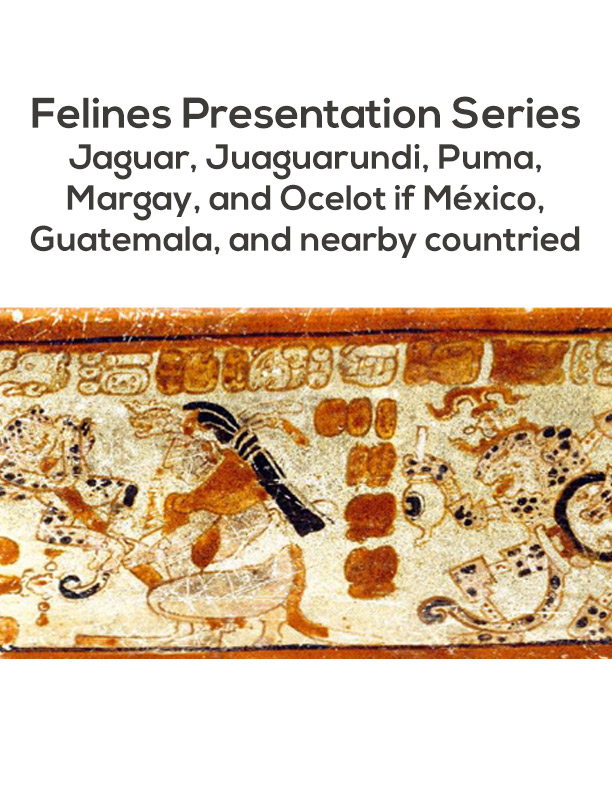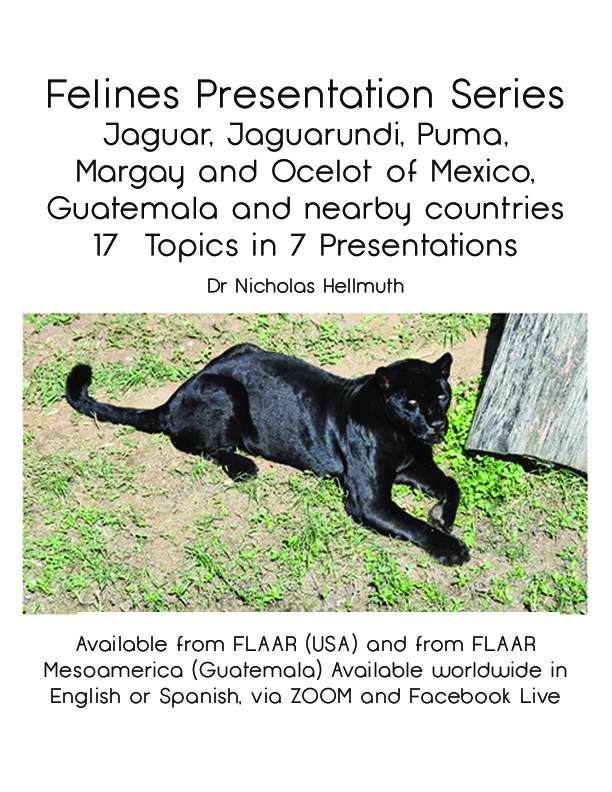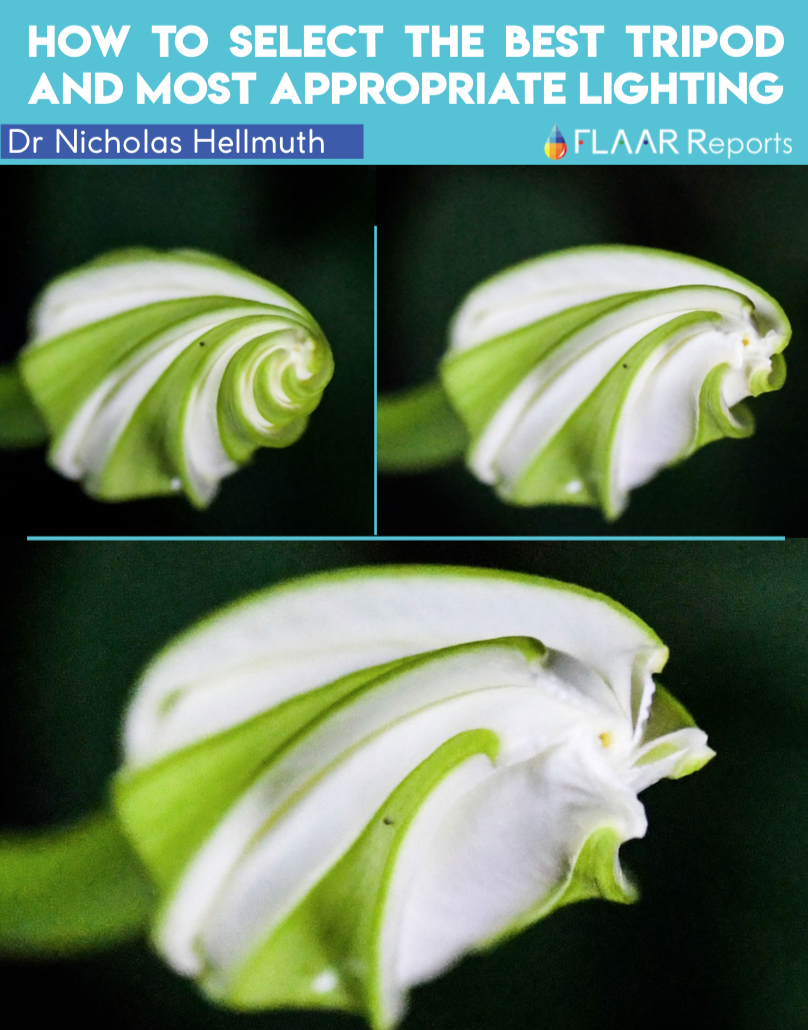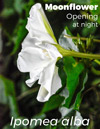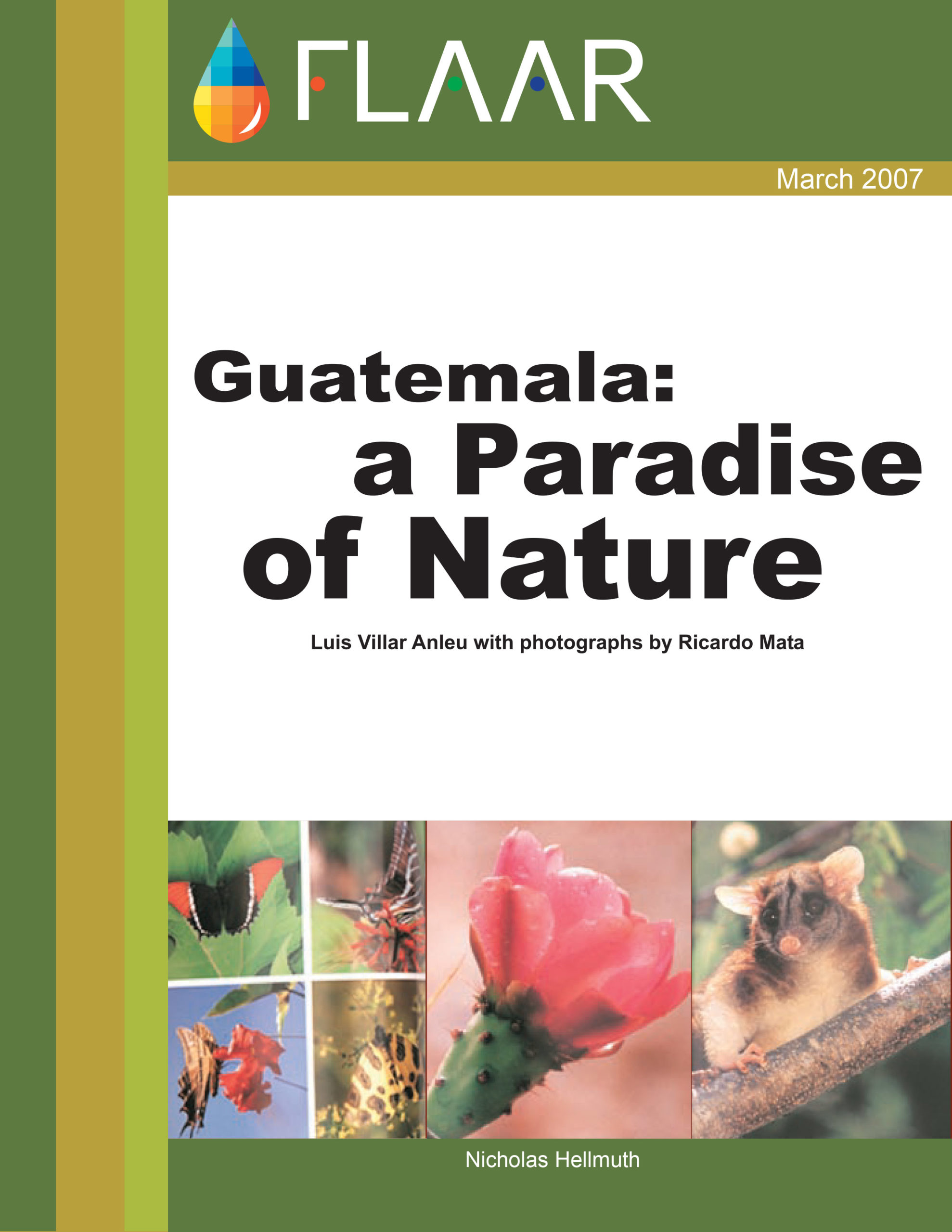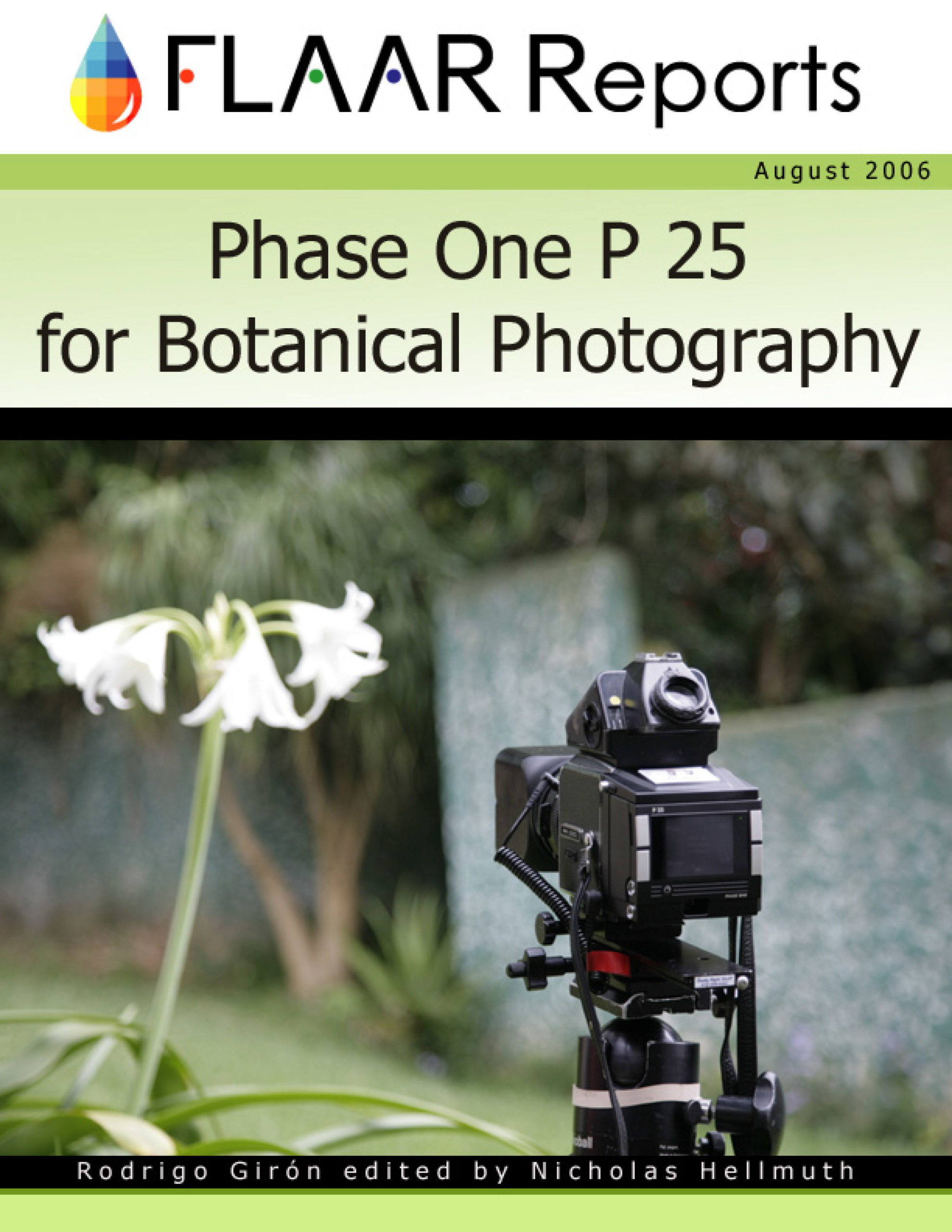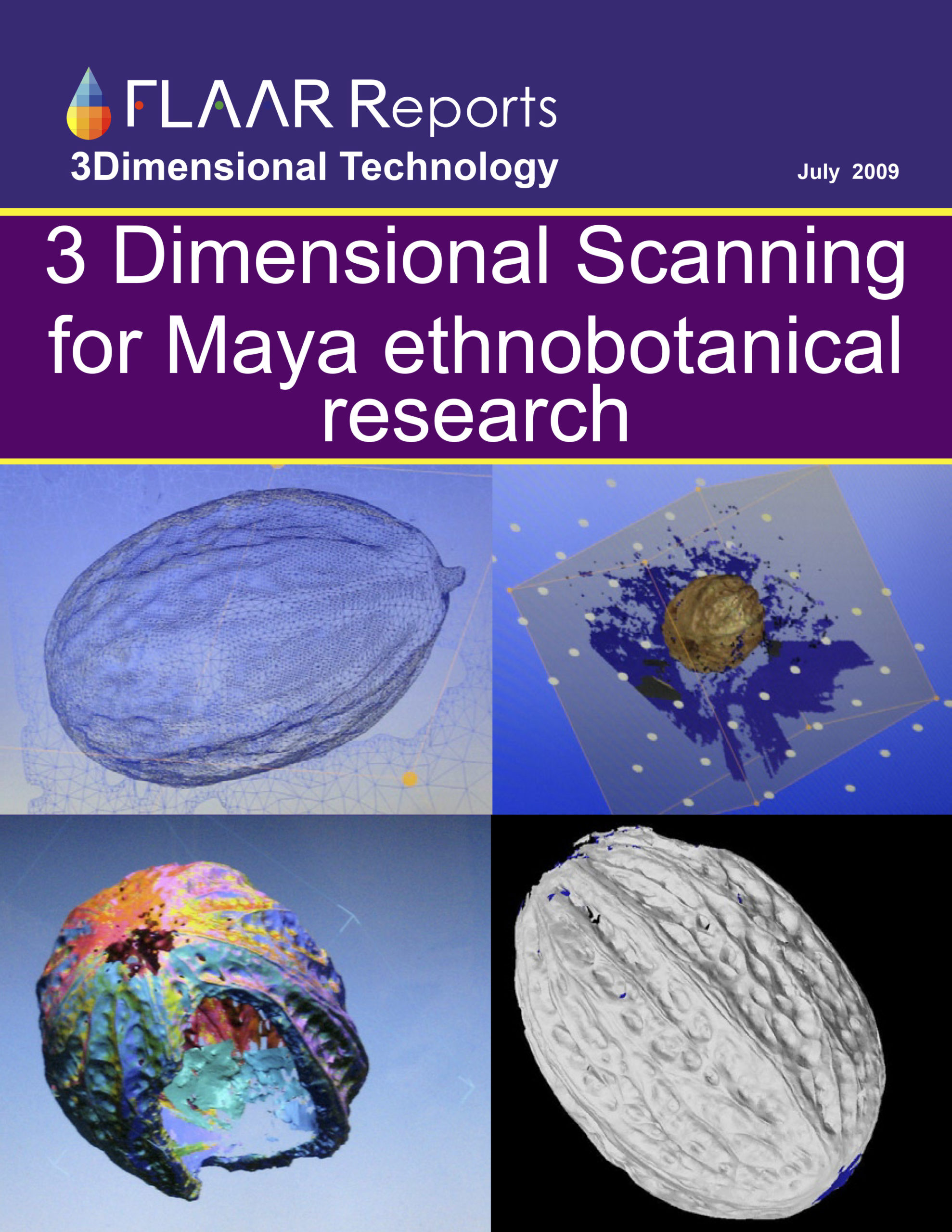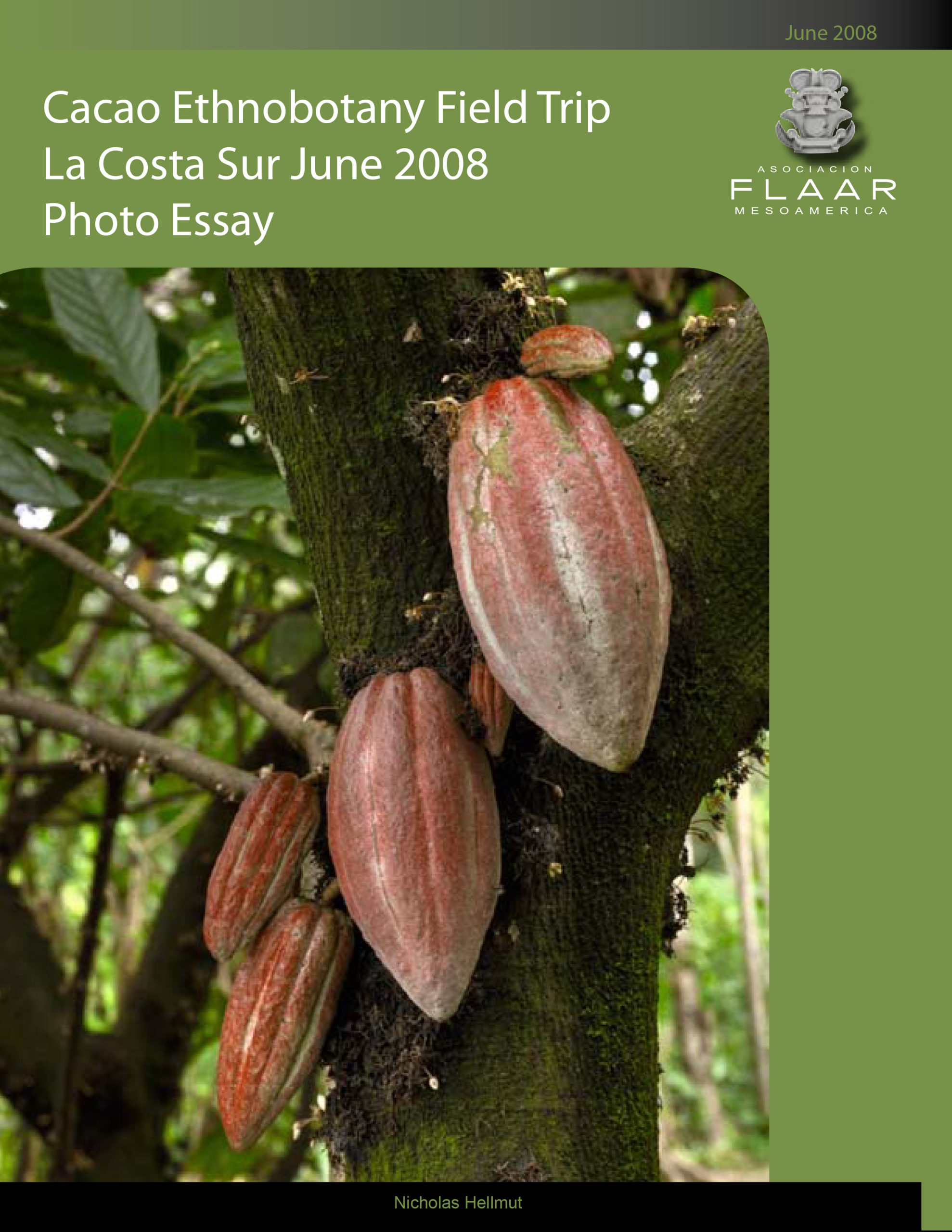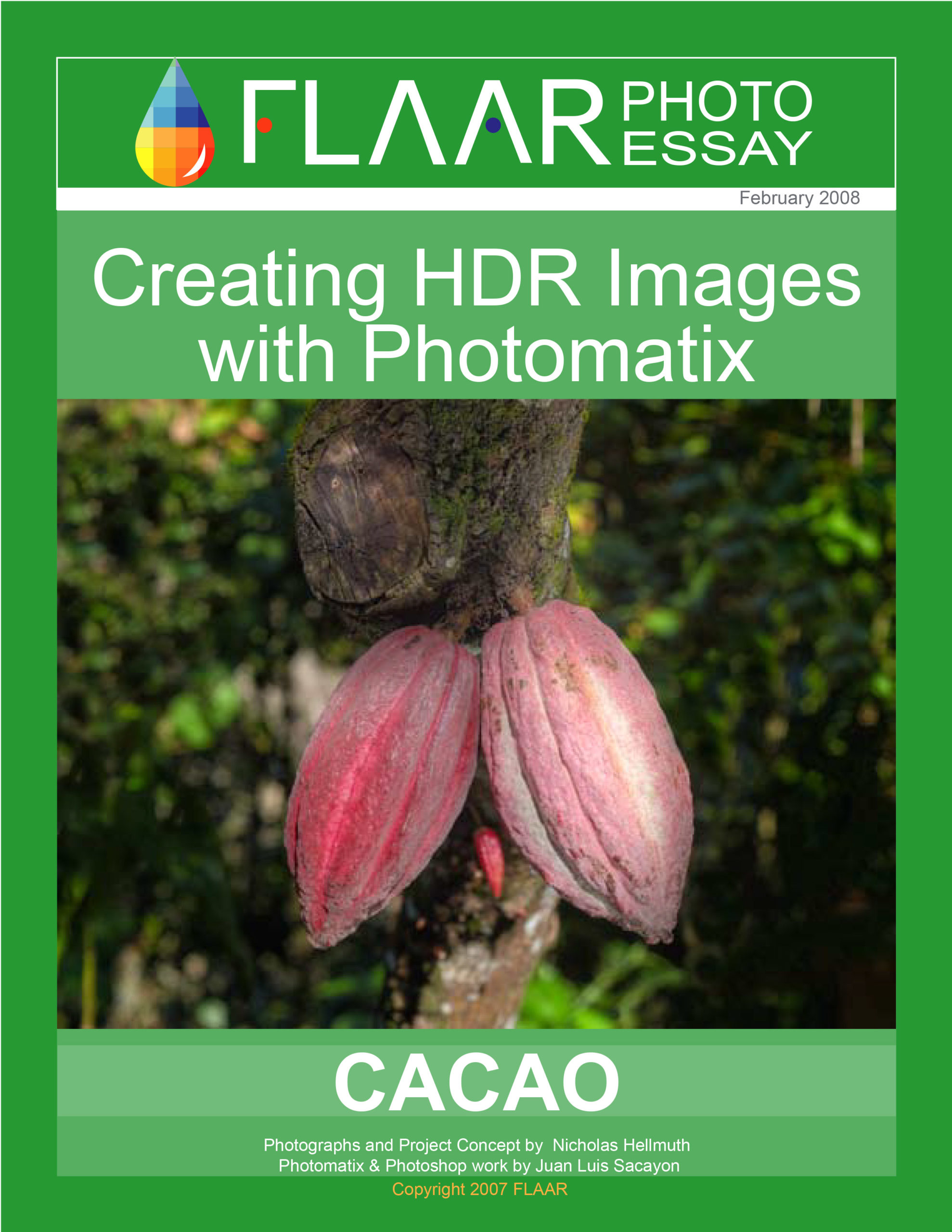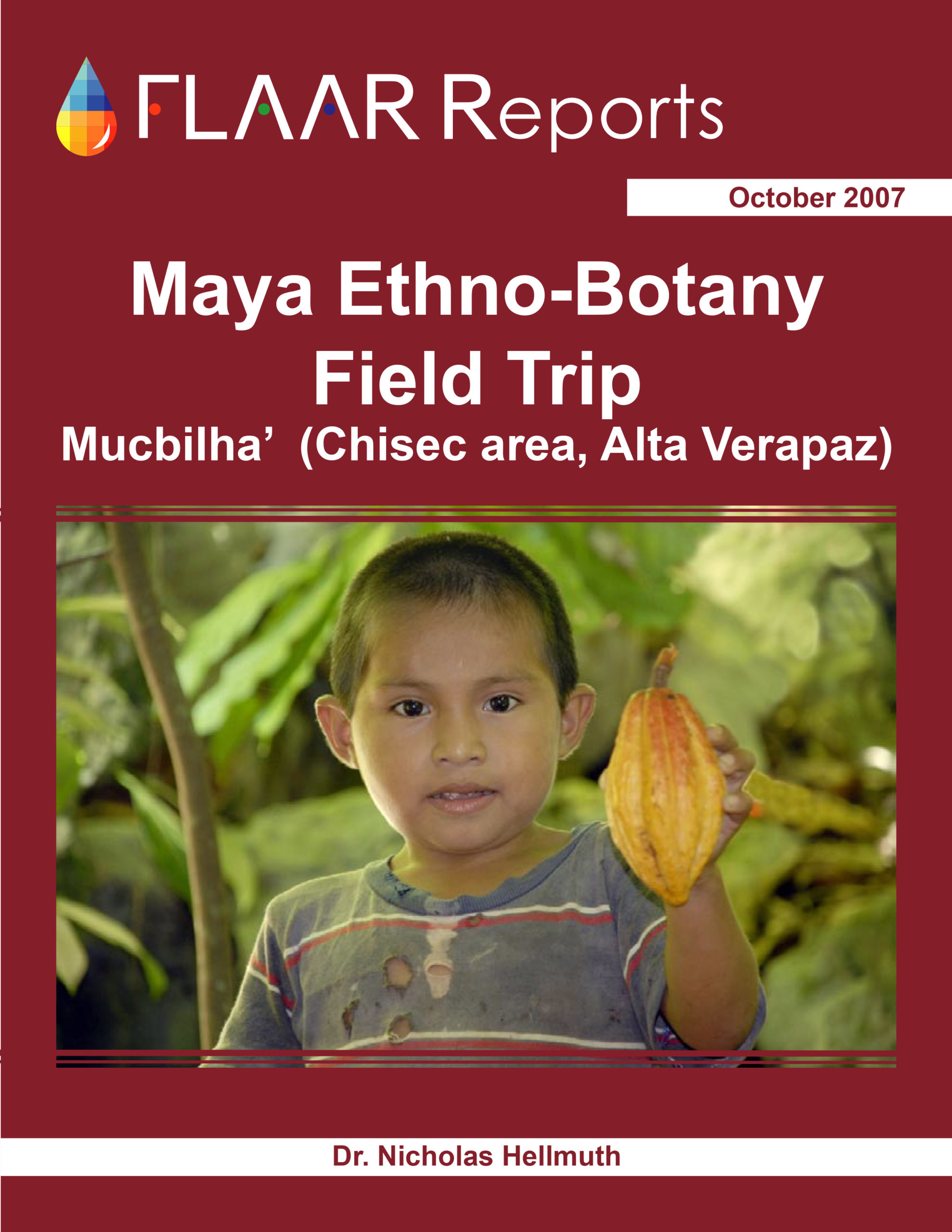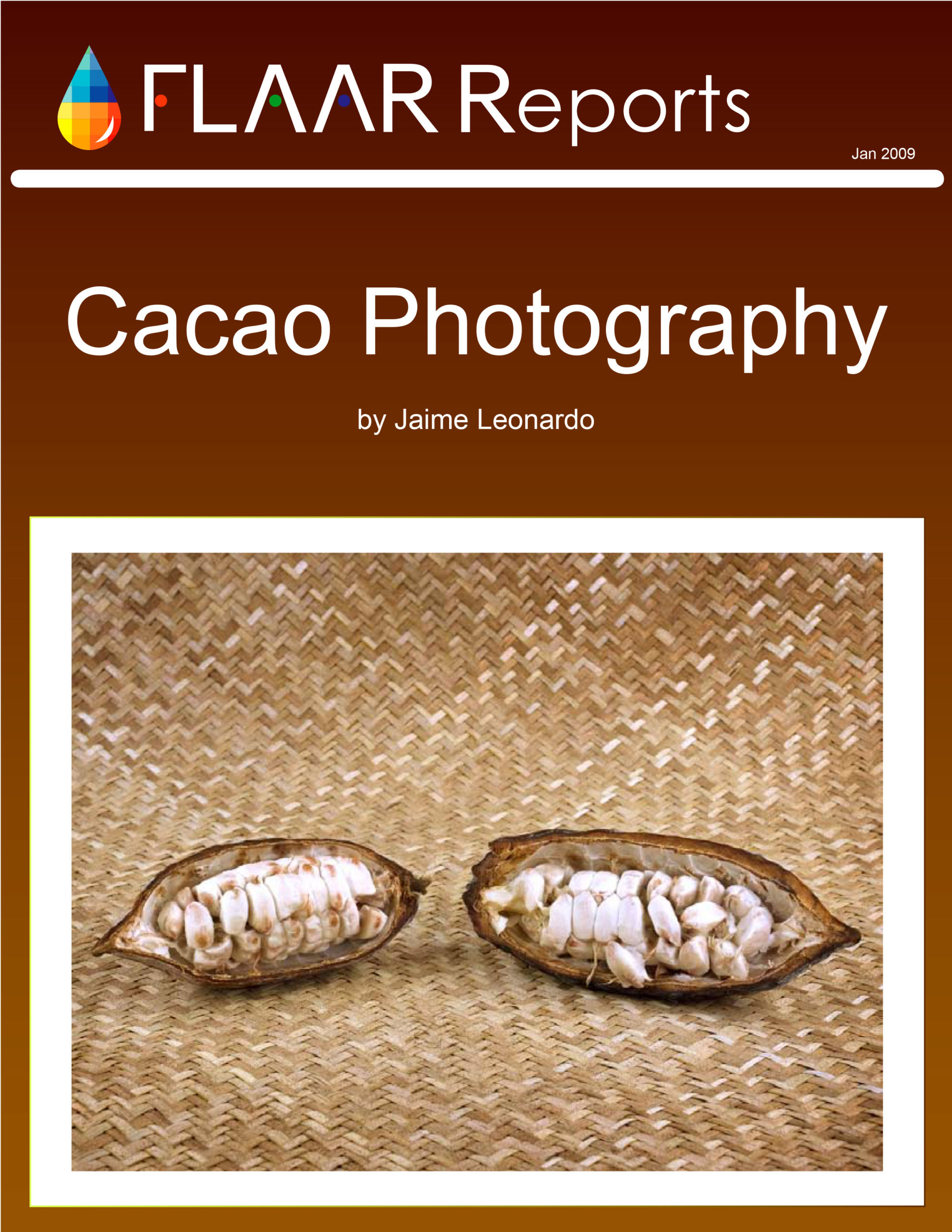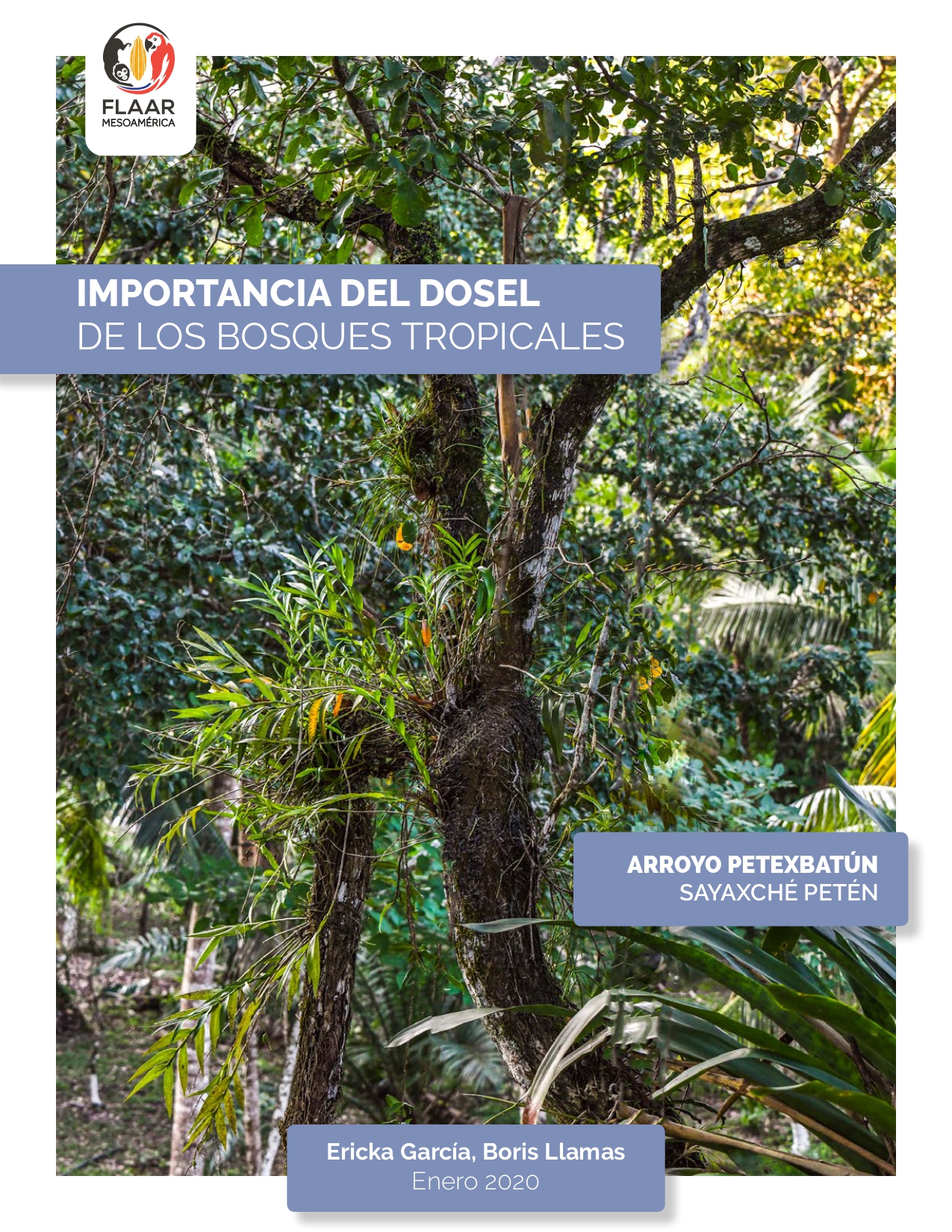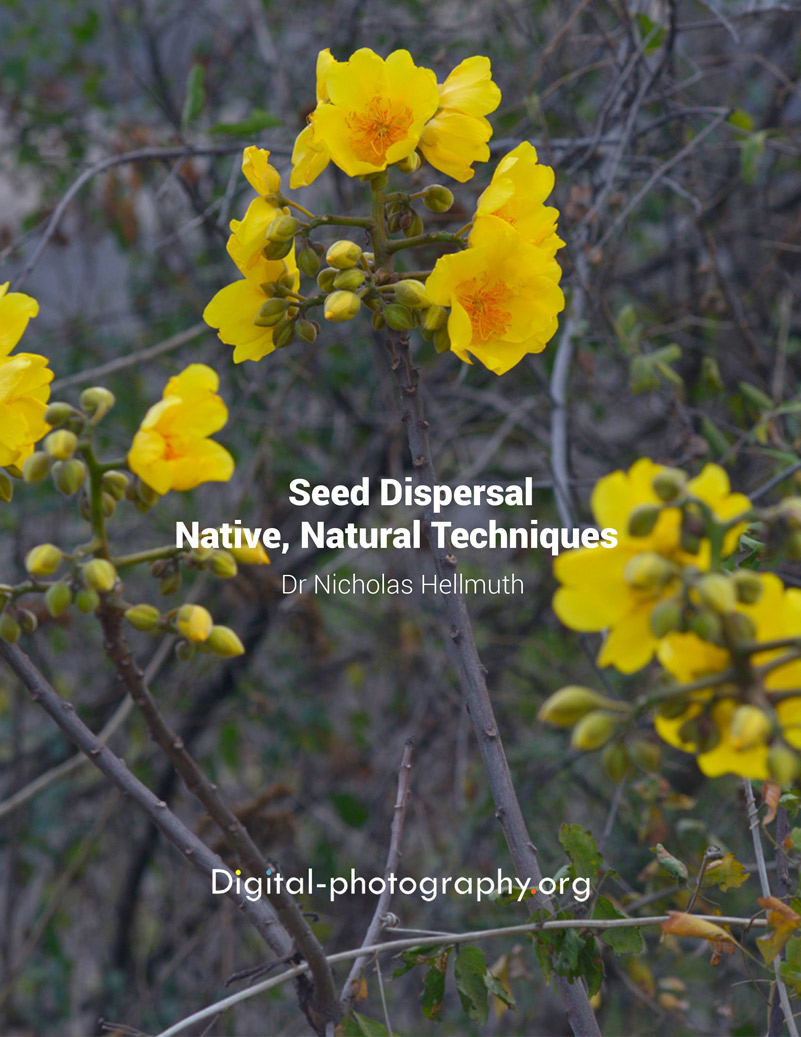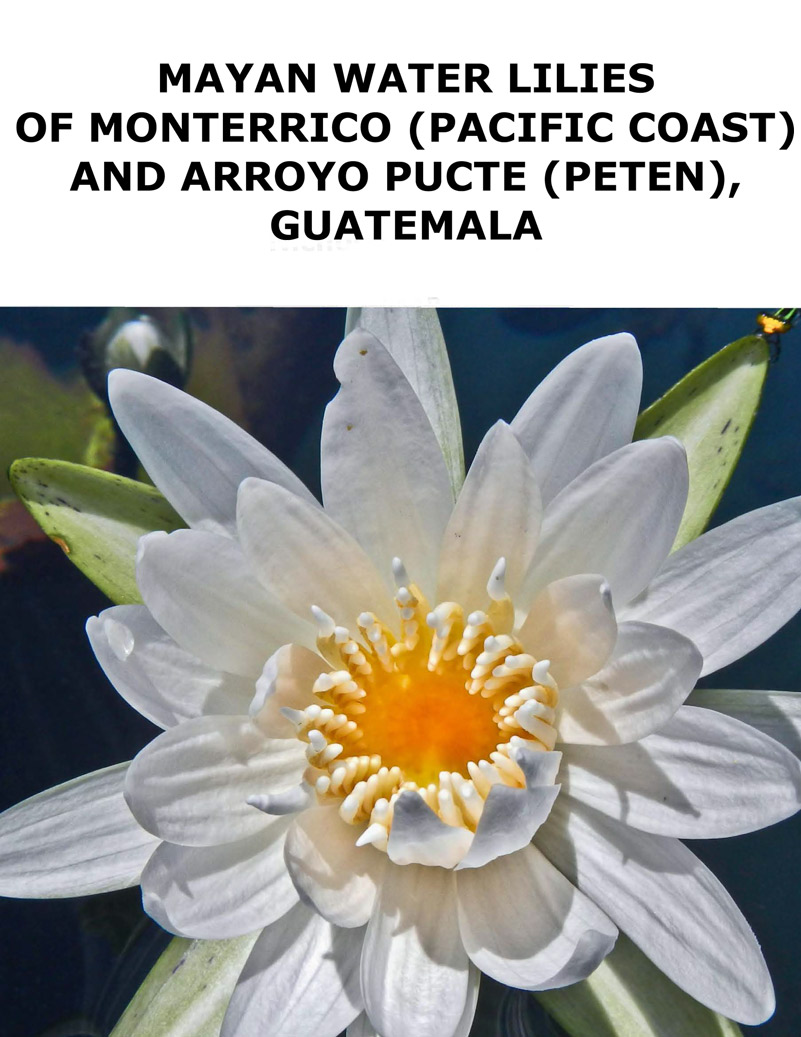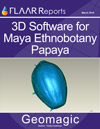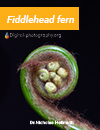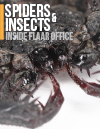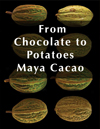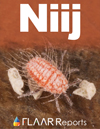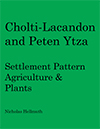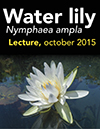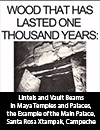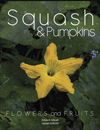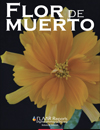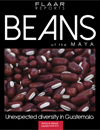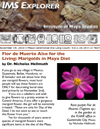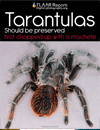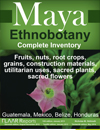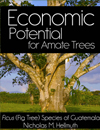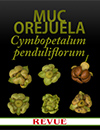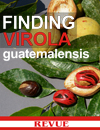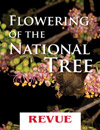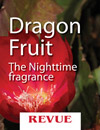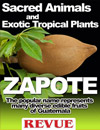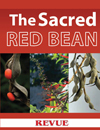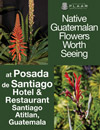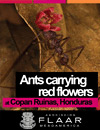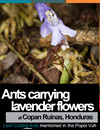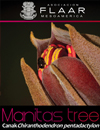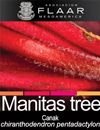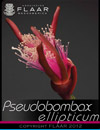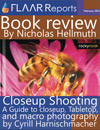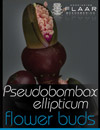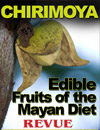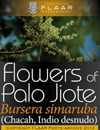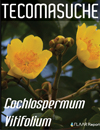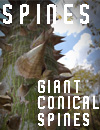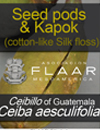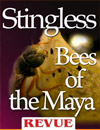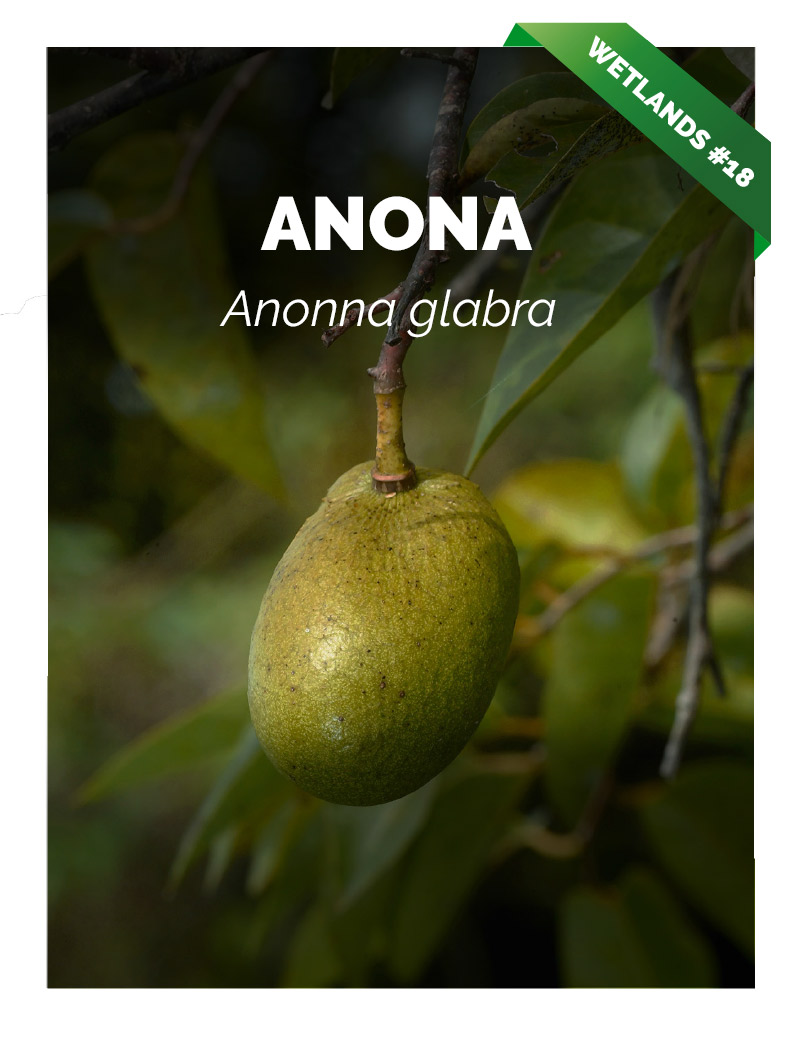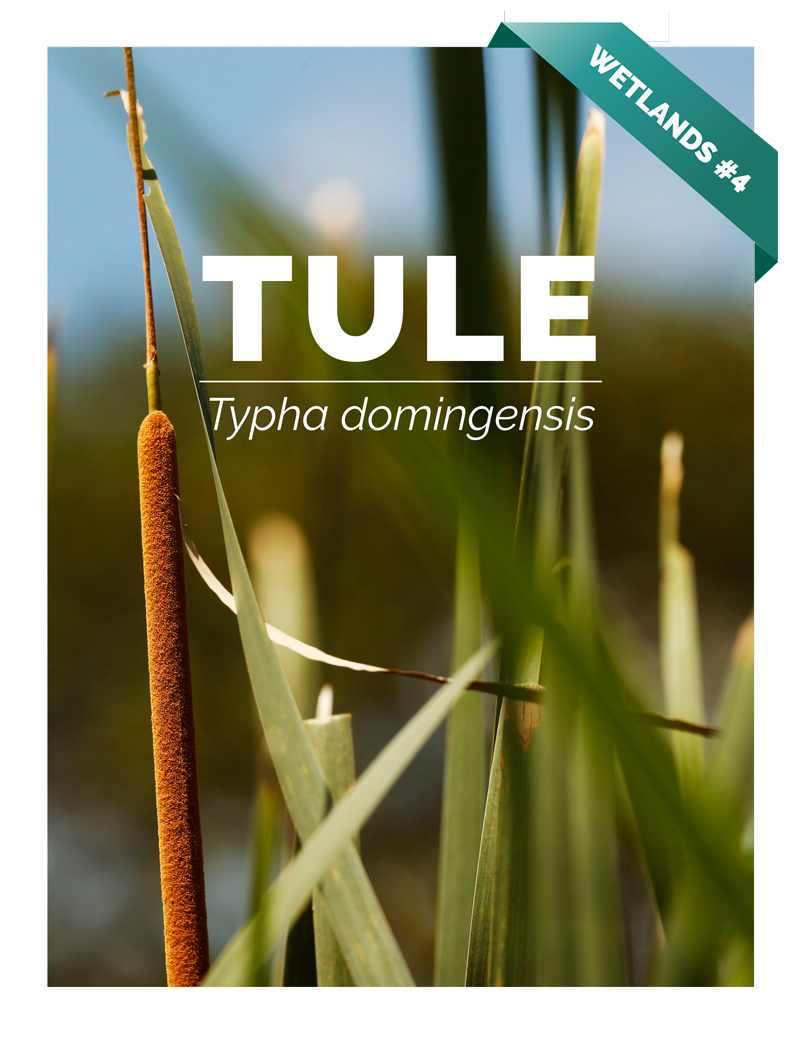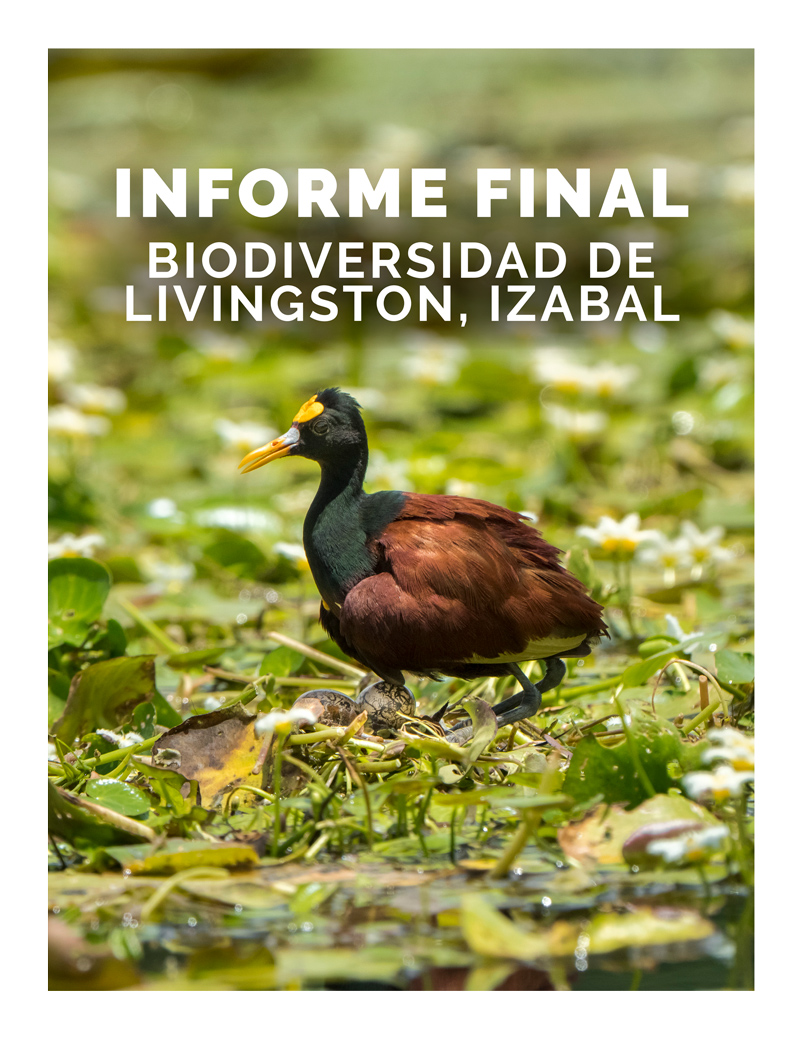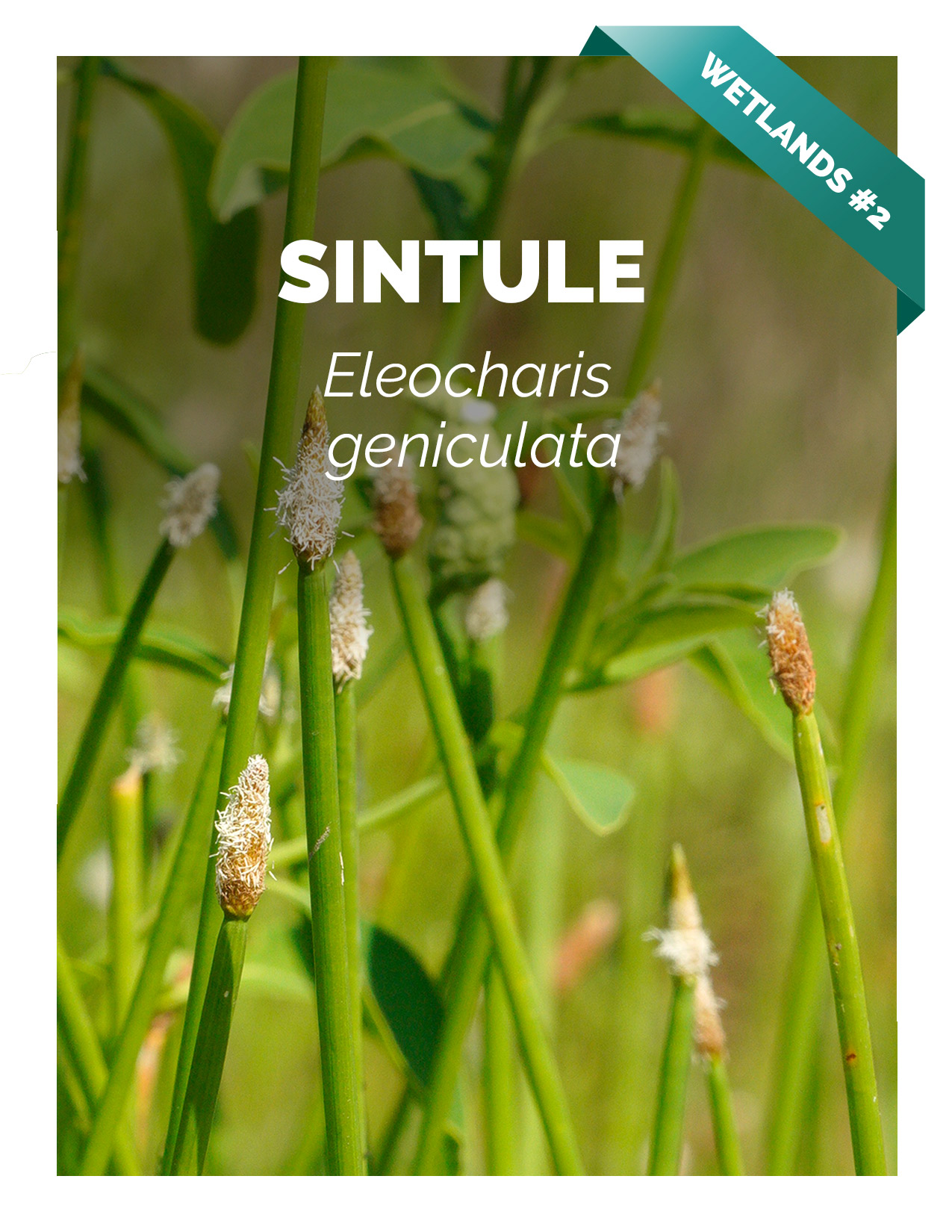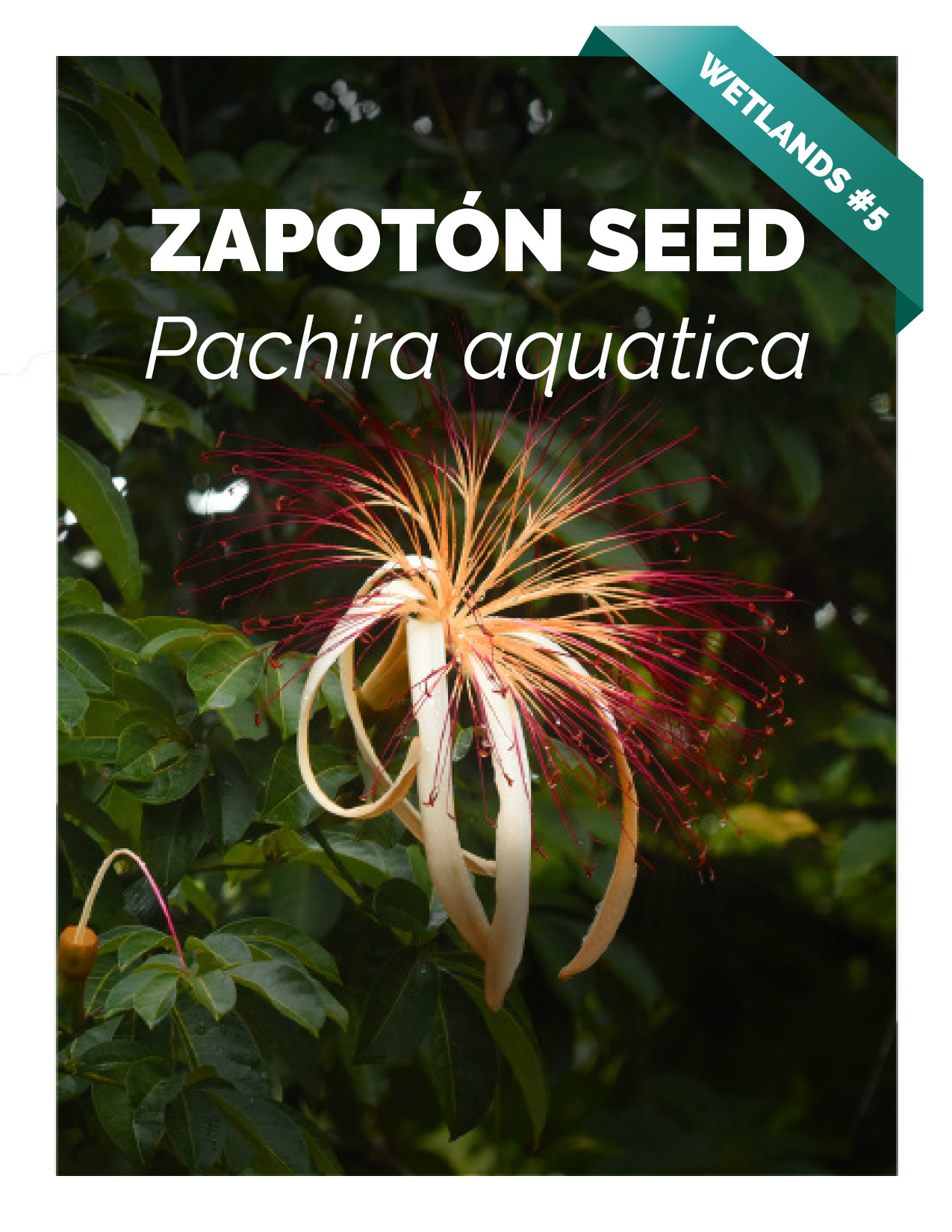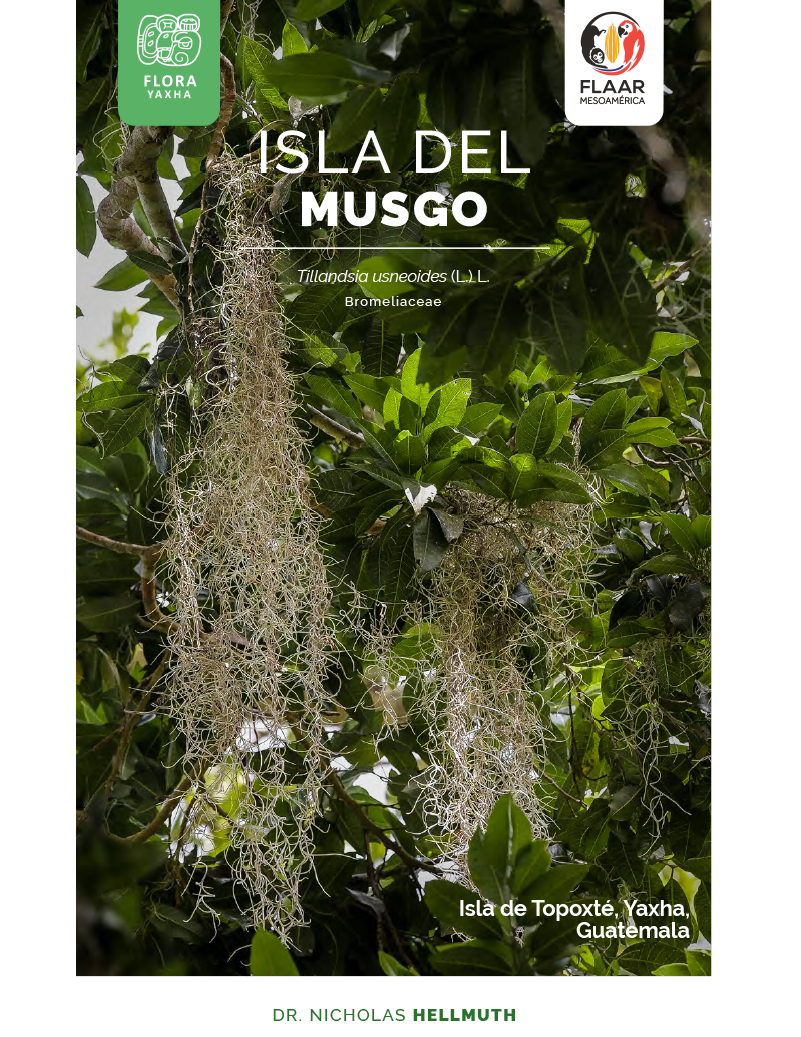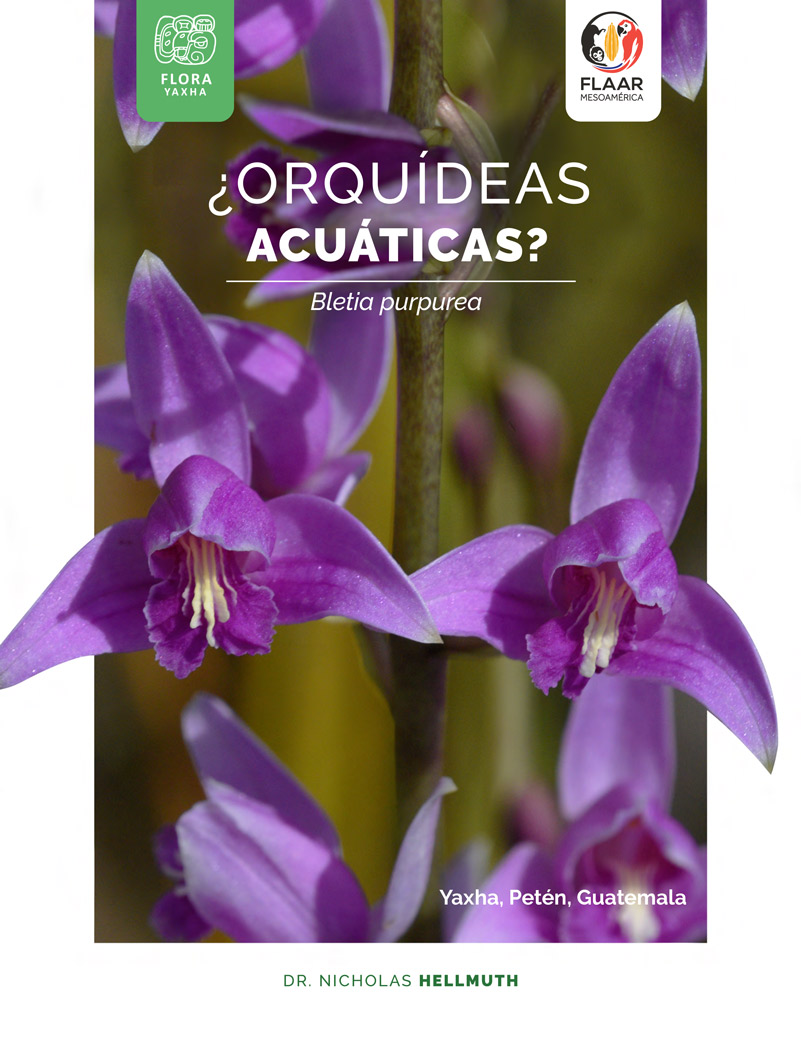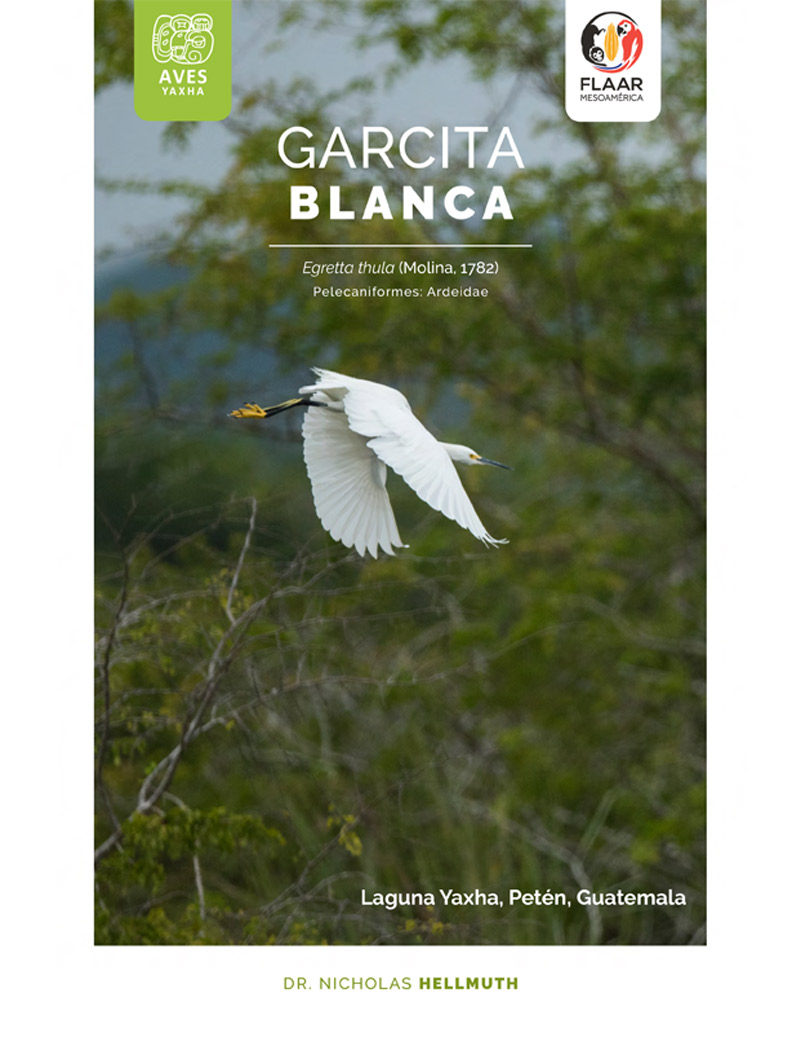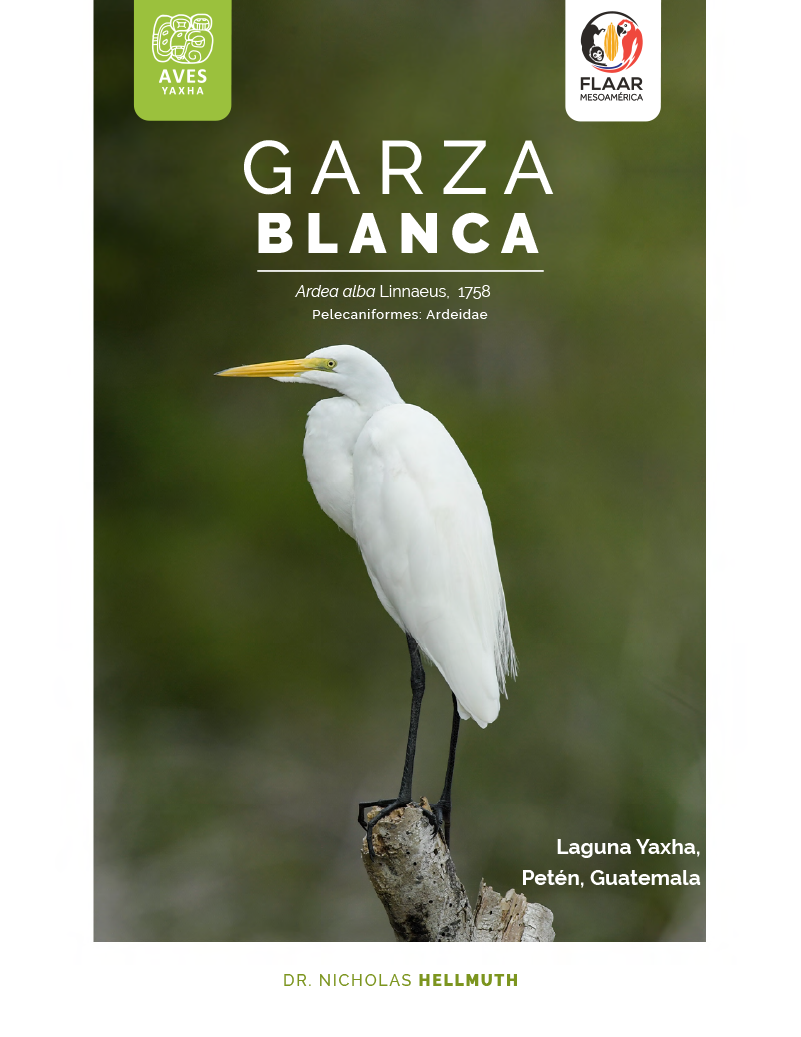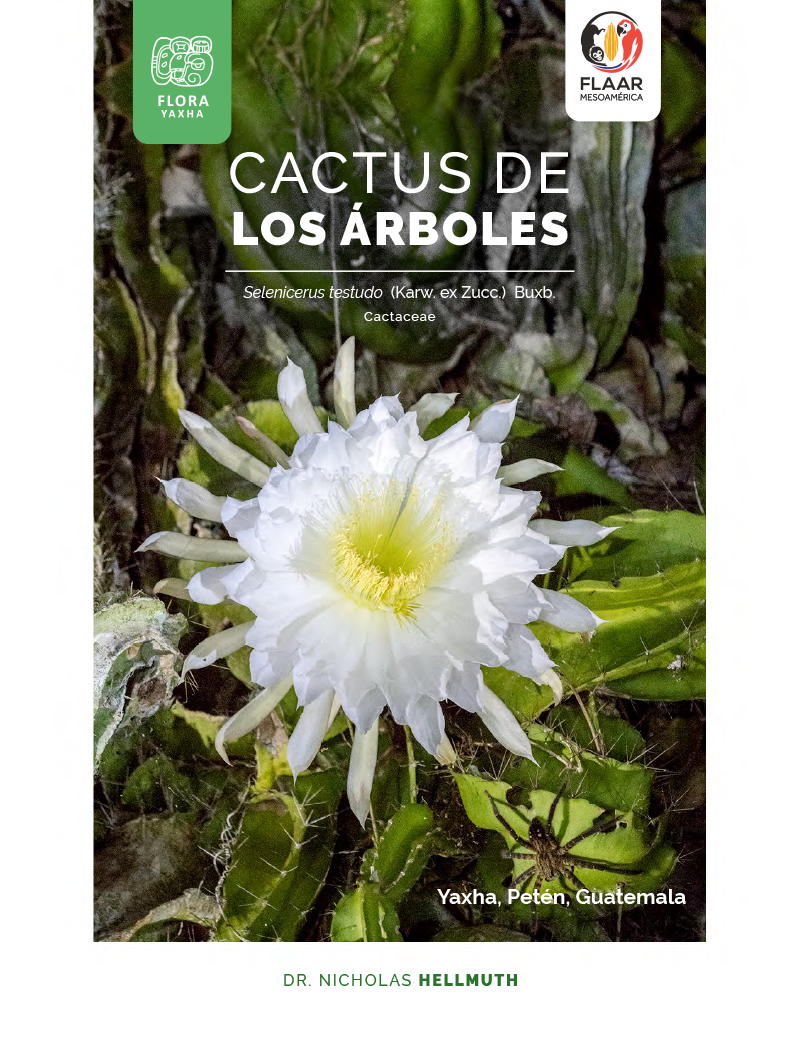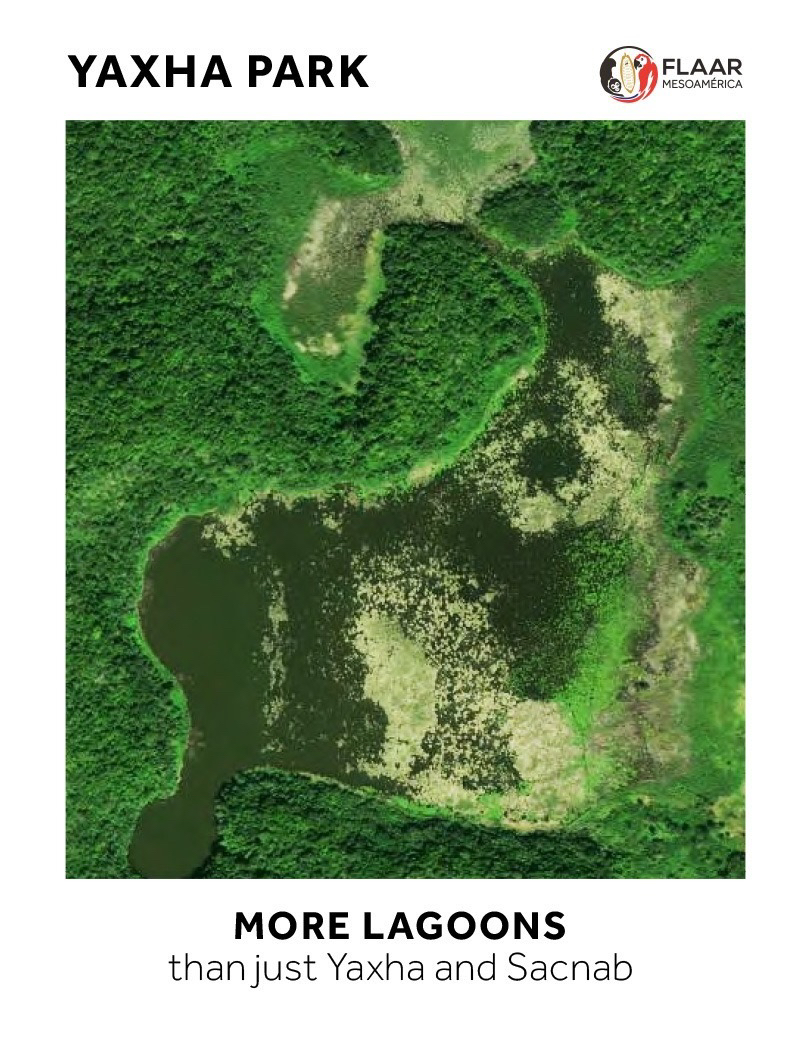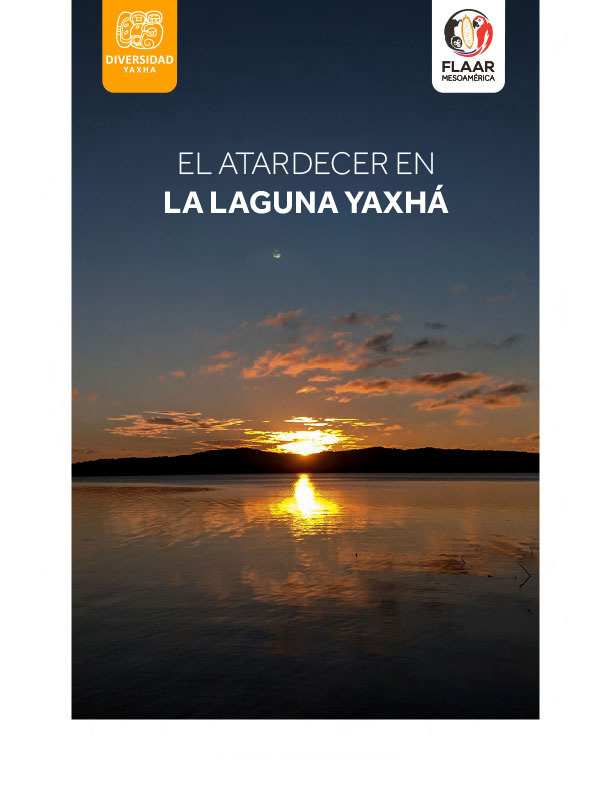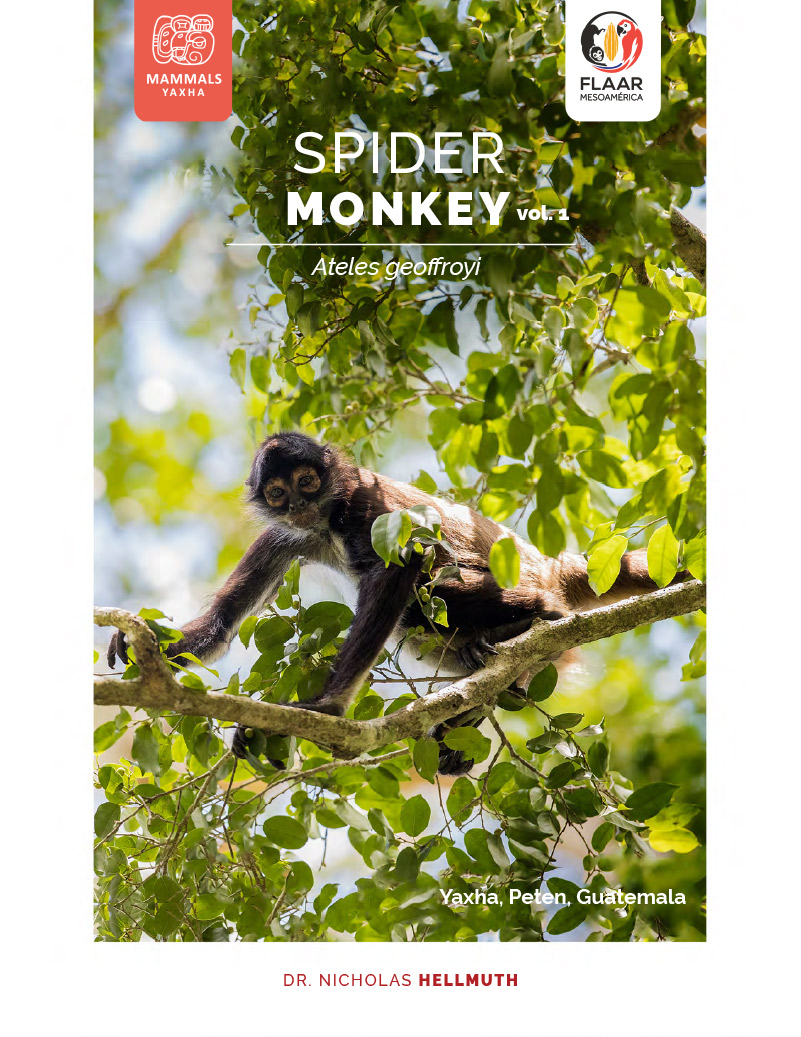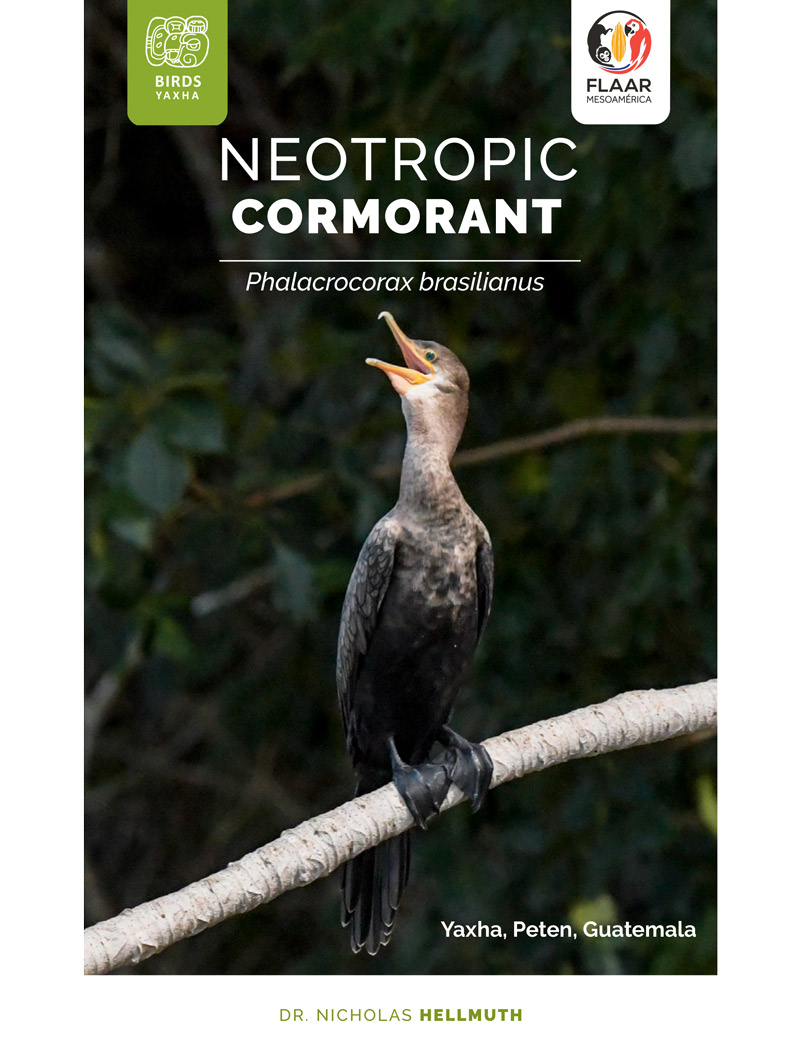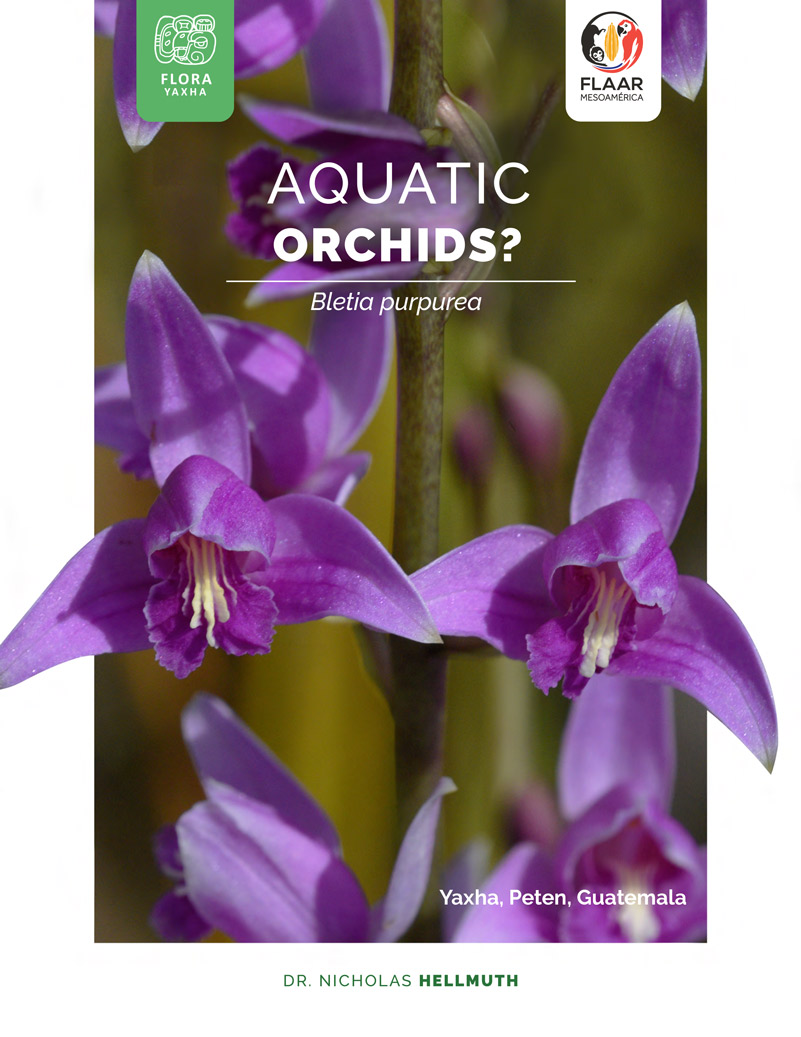I love to find aquatic orchids in the Mayan areas of Guatemala
In late October 2018, while returning in a boat from the far west end of Lake Yaxha, I noticed a pink-lavender flower that I had not seen before. It was buried though the tall reeds that grow one to three meters out from the shore. So I assumed it was just a miscellaneous flower (we had to get the boat back to the camp, so were in a hurry; thus I did not stop).
But then I saw more of these pink-lavender-purple flowers through the masses of reed grass, so I asked the boat captain to stop. Lo and behold, we had an orchid in front of us: growing on the base of the reeds, at water level. So I estimated this could be called an aquatic orchid, or at least a semi-aquatic orchid. Since the shore plants here are not a swamp it is not really a swamp orchid or bog-orchid in the locations we found it.
But no one wanted to accept that water-related orchids existed (orchid botanist Fredy Archila was the only person in all of Guatemala that said that water-related orchids do indeed exist).
So then I began to download articles, reports, and information. Senaida, and Elena with the help of a botanist, each independently identified the orchid as Bletia purpurea.
Where it grows depends on what is available: so in some parts of Guatemala perhaps it is on the shore, in other places it is on vegetation floating on the surface (the orchid itself is attached to the other plants; the orchid is not a water lily type of floater). In the misty mountains of Alta Verapaz Bletia purpurea does not grow on or even adjacent to water: these mountains are quite moist from mist and rain.
Since still no one wanted to believe that I had found an aquatic orchid in Peten, I returned to Yaxha in November with an orchid specialist who politely indicated that to him it was a terrestrial orchid. But I then went into the water so I could study the plant directly. So now we have spent enough time that I found one plant with its roots into the water and another plant which had its plant mass support tipped over and so the base of the orchid was a centimeter or so physically in the water (for over 20 days since park ranger Teco found the base in the water already over 20 days ago). And it is still in full flowering.
Plus we found other botanical articles who have found this orchid in other parts of the Mayan areas on plant mass which is floating (but evidently I am the first individual crazy enough to wade into the water; the water is 4 feet deep under the reed mass, so you definitely get wet) to study the situation of the orchid.
In other areas (north side of Lake Yaxha) the orchid was on plant masses with more than 5 meters depth of water below it, so it is not really always “riparian;’ along the north shore of Lake Yaxha Bletia purpurea grows out one to three meters away from the shore. So far we have never found it on the shore; it is always on rotting root mass and rotting reeds which are usually horizontal over the water when the reeds die and continue their presence on and under the surface of the water.
We will publish all our photos and notes as soon as possible.
I just presented our information at an orchid exhibit and conference in Coban, Alta Verapaz, Guatemala. Several orchid specialists from the USA said their orchid societies back home might also like to have a slide lecture on this orchid’s unexpected life stype. PLUS, we now have a list of several other water-related orchids known from nearby lakes in Peten. So as soon as they bloom we will hope to find them at Yaxha. The reeds are so thick that it’s a challenge to see an orchid until it is blooming.
In other parts of Guatemala not all Bletia purpurea grow on material on top of water; this and other “water-related” orchids are very adaptive. Many also grow in other eco-systems, so you will find many books and articles that describe Bletia purpurea as growing in other habitats. Indeed Senaida Ba found what looks like a mountain version of Bletia purpurea growing alongside the road from Senahu to Chipemech. Orchid books say it has been found in past decades around Cahabon. The mountains above Senahu is nowhere near water: no rivers, no lakes, not even a bog nearby. But all the mountain slopes around Senahu are moist much of the year due to mist and rain (much more than in Peten).
PDF, Articles, Books on Bletia purpurea, Pine pink
- 2015
- Bletia: a new world terrestrial genus. Orchids. Page 201-203.
Available online:
www.researchgate.net/publication/286250229_Bletia_A_New_World_Terrestrial_Genus
- 1985
- Orchids of Guatemala and Belize. Courier Corporation. 779 pages.
This is the 1985 reprint of three earlier reports by these orchid specialists.
1985 combined volume is sold online:
www.amazon.com/Orchids-Guatemala-Belize-Oakes-Ames/dp
/0486248348/ref=sr_1_1?ie=UTF8&qid=1543253120&sr=8-
1&keywords=Orchids+of+Guatemala+and+Belize
- 2015
- Sistematización del modelo de restauración ecológica del centro de
conservación orquigonia; Cobán, Alta Verapaz. Universidad Rafael
Landívar. 93 pages.
Available Online:
http://recursosbiblio.url.edu.gt/tesiseortiz/2015/06/22/Archila-Yohanna.pdf
- 2008
- Catalogo de las orquideas de Chiapas. Lacandonia, ano 2, vol 2, num. 2, diciembre de 2008, pp. 25-122.
Bletia purpurea (Lam.) DC DISTRIBUCIÓN GENERAL.- México (Campeche, Chiapas, Jalisco, México, Michoacán,
Morelos, Nuevo León, Oaxaca, Puebla, Q. Roo, San Luís Potosí, Tabasco, Tamaulipas, Veracruz, Yucatán), Guatemala,
Belice, Honduras, El Salvador, Nicaragua, Costa Rica, Panamá, Indias Occidentales, Florida y Norte de Sudamérica.
CHIAPAS.-11 km de Xanil, Chilón; crucero Corozal; Santa Cruz, San Felipe, San Cristóbal de Las Casas. Soto Salazar
y Hágsater (1995); Espejo y López-F., 1: 10 (1997); Soto (2001).
Information is always helpful (his page 33), but no mention of being near (or not near) creeks, rivers, lakes, or swamps.
Free download on Internet:
https://cuid.unicach.mx/revistas/index.php/lacandonia/article/download/126/128/
- 1968
- Notes on Bletia (Orchidaceae). Brittonia. Vol. 20, No. 22. Pages 182-190.
Sold Online:
www.jstor.org/stable/2805621?seq=1#page_scan_tab_contents
- 2008
- Asymbiotic seed germination, in vitro seedling development, and greenhouse acclimatization of the threatened terrestrial orchid Bletia purpurea.
Plan Cell Tiss Organ Cult. No. 94. Pages 11-21.
Available Online:
http://hort.ufl.edu/plant-restoration/kane-lab/orchids/pdf/articles/1-dutra-2008-asymbiotic-germination-bletia-purpurea.pdf
- 2017
- Diversidad de orquídeas del sistema fluvio lagunar deltaico Palizada-del Este, en el área de Protección de Flora y Fauna Laguna de Términos,
Campeche, México. Acta biol. Colomb. 2017;22(3):398-407.
Free download:
www.scielo.org.co/pdf/abc/v22n3/0120-548X-abc-22-03-00398.pdf
you find this first at
www.scielo.org.co/scielo.php?script=sci_arttext&pid=S0120-548X2017000300398
Also a free download at
https://revistas.unal.edu.co/index.php/actabiol/article/view/53107
- 2016
- Distribución altitudinal de orquídeas terrestres como indicador del cambio climático en el Cerro Uyuca. Escuela agrícola Panamericana, Zamorano,
Honduras. 57 pages.
Available Online:
https://bdigital.zamorano.edu/bitstream/11036/5787/1/IAD-2016-T021.pdf
- 2011
- Examining the interaction of light, nutrients and carbohydrates on seed germination and early seedling development of Bletia purpurea (Orchidaceae).
Plant Growth Regul. No. 63. Pages 89-99.
Available Online:
https://hort.ifas.ufl.edu/plant-restoration/kane-lab/orchids/pdf/articles/2-johnson-2011-light-temperature-bletia-purpurea.pdf
- 2013
- Differential germination and developmental responses of Bletia purpurea (Orchidaceae) to mannitol and sorbitol in the presence of sucrose and fructose.
Journal of Plant nutrition. Vol. 36, No. 5. Pages 702-716.
- 2012
- Estudio dela orquideoflora de la reserva privada Chicacnab, Alta Verapaz, Guatemala. Lankesteriana. Vol. 12, No. 3. Pages 175-190.
Available Online:
www.redalyc.org/html/443/44339825007/
- 2012
- Propagación in vitro de Bletia purpurea Lam. Para la producción de semillas sintéticas. Centro de Investigación y Asistencia en tecnología
y diseño del estado de Jalisco, A.C. 100 pages.
Available Online:
https://ciatej.repositorioinstitucional.mx/jspui/bitstream/1023/435/1/Eddy%20Morales%20Miss.pdf
- 2014
- Revisión e integración del conocimiento de las Orchidaceae de Tabasco, México. Botanical Sciences. Vol. 92, No. 4. Pages 519-540.
Available Online:
www.scielo.org.mx/pdf/bs/v92n4/v92n4a6.pdf
- 2002
- Morphological variation in populations of Bletia purpurea (Orchidaceae) and description of the new species B. riparia. Brittonia. Vol. 54,
No. 2. Pages 99-111.
Sold Online:
www.bioone.org/doi/abs/10.1663/0007-196X%282002%29054%5B0099%3AMVIPOB%5D2.0.CO%3B2?journalCode=brit
- 2016
- Diversidad y distribución altitudinal de orquídeas terrestres del Cerro Uyuca, Honduras. Revista Nicaraguense de Biodiversidad.No.6. 73 pages.
Available Online:
www.bio-nica.info/RevNicaBiodiv/06-Orquideas-Uyuca.pdf
- 2007
- Desarrollo local en el Tropico Mexicano. Los Camellones Chontales de Tucta, Tabasco, Master’s Thesis, Social Anthropology, Universidad
Iberoamericana, Mexico, D.F.
Mentions Bletia purpurea and Habenaria repens as aquatic (page 31).
Free download on Internet
- 2007
- Orquídeas de México. Herbario AMO-Instituto Chinoín, A.C. y Centro interdisciplinario de investigación para el desarrollo integral
regional-unidad-Oaxaca. 67 pages.
Available Online:
www.conabio.gob.mx/institucion/proyectos/resultados/Inf%20P107.pdf
Suggested webpages with photos and information on Bletia purpurea, Pine pink
www.orchidspecies.com/bletpurpurea.htm
Photo and information.
www.orchidspecies.com/bletreflexa.htm
Photo and information of Bletia reflexa.
https://goorchids.northamericanorchidcenter.org/species/bletia/purpurea/
Photos and information.
www.backyardnature.net/yucatan/bletia.htm
Photos and information.
http://ecobiosis.museocostarica.go.cr/especies/ficha/1/4015
Information.
www.gbif.org/species/2794604
Photos and map location.
First posted, November 2018
Bibliography prepared by Marcella Sarti, FLAAR Mesoamerica (Guatemala).
Text and additions to the bibliography by Nicholas Hellmuth, FLAAR (USA).


